Links to all my notes (includes mini-projects and source code etc)
(+) 0001 How do I change the Pi System partition size ?
(+) 0100 Device tree settings
(+) 0201 Power over Ethernet - (PoE)
(+) 0202 Solar Power - (with WiFi)
(-) 0203 Power Bank pass through
How 'pass-through' works
Loads of nonsense is written about 'wearing out the battery by constantly charging and discharging it at the same time', mainly by 'reporters' with little or no scientific education.
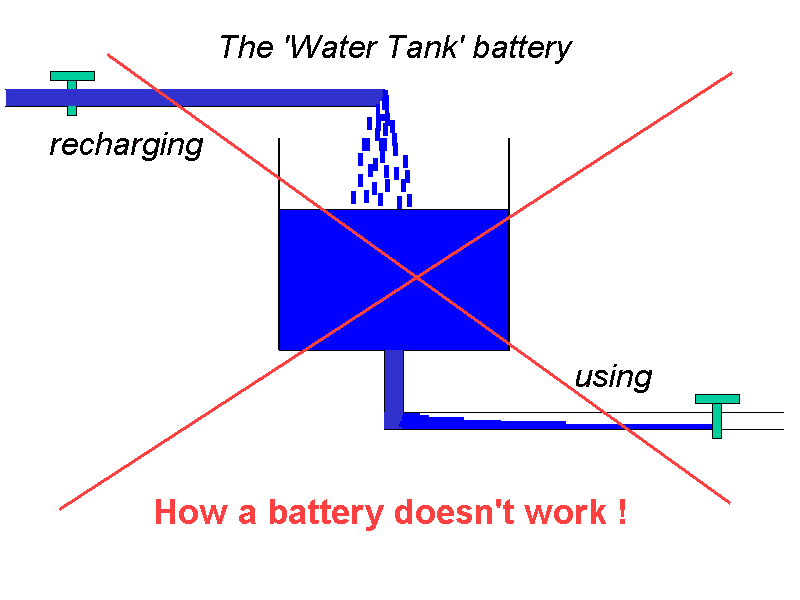
The usual way to explain how the magic of electricity 'works' is by analogy to a plumbing system. However it WRONG to think of a battery as simple open top 'water tank' (with a hole in the bottom out of which power can flow).
It's this incorrect model that leads to the nonsense idea that 'simultaneous charge and discharge wears out the battery' (as you pour water at the top whilst water flows out of the bottom)
This is NOT how a battery works. Instead it's more like the 'expansion tank' you have in a modern central heating system. There is just one 'hole in the bottom' through which power flows in or out (so it's not possible for power to flow in both directions 'at the same time').
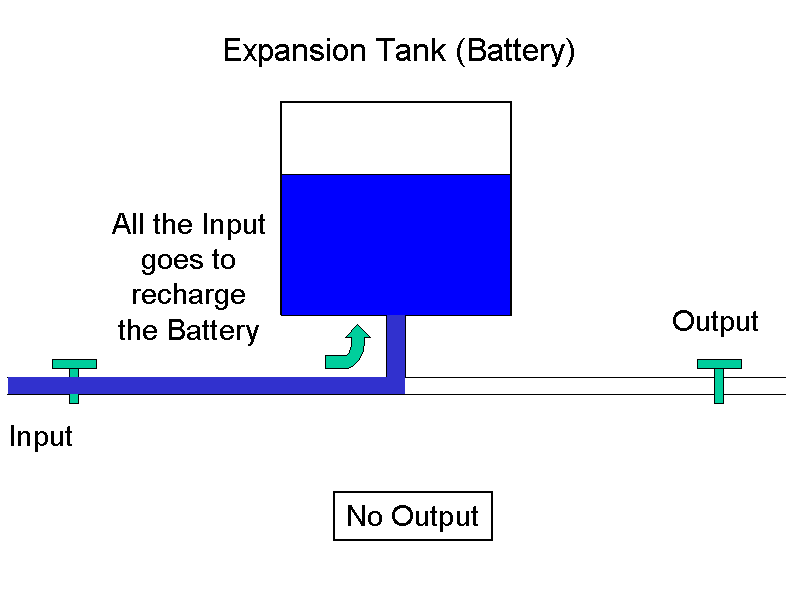
To fill (charge up) the 'expansion tank' (battery), the water pressure (voltage) at the input has to be higher than the pressure already in the tank.
When there is no output, all the input goes into filling the tank until the pressure of the tank (battery voltage) matches the input pressure (input voltage) and the tank (battery) is full.
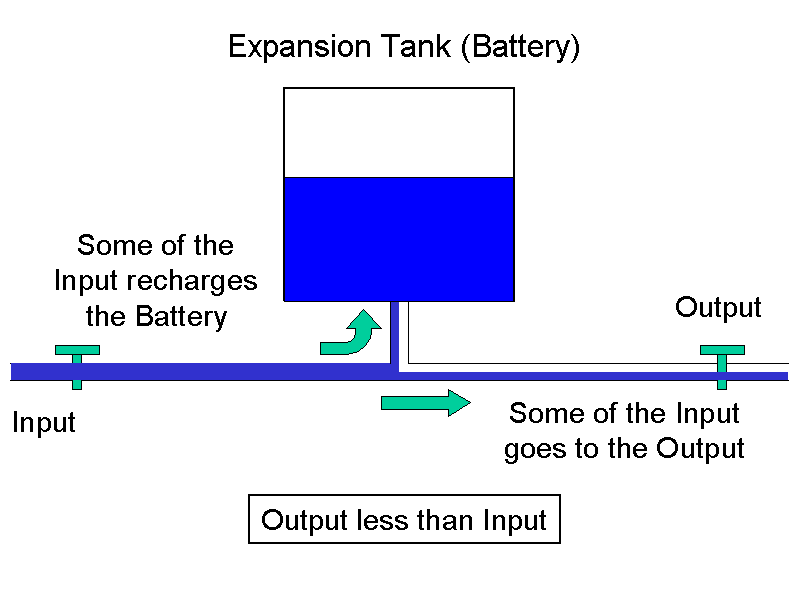
What happens if we turn on the output ?
Well, then some of the input has to go to the output, but so long as the output is less than the input, the 'left over' input continues to fill the tank (recharge the Battery). There is no 'simultaneous charge and discharge effect' that some ignorant reporters like to talk about.
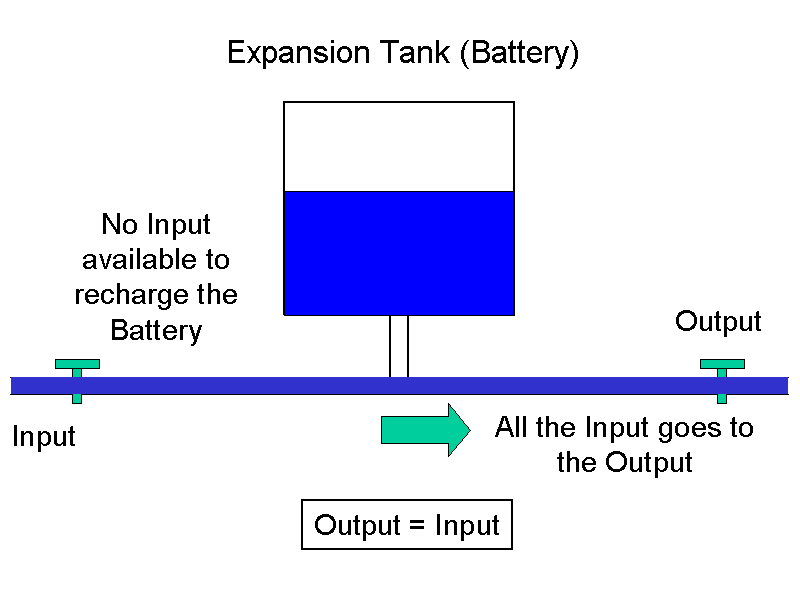
When the output matches the input, the tank stops filling because all the input is being diverted to the output. Again, there is no 'simultaneous charge and discharge' - the battery just remains at it's current charge level.
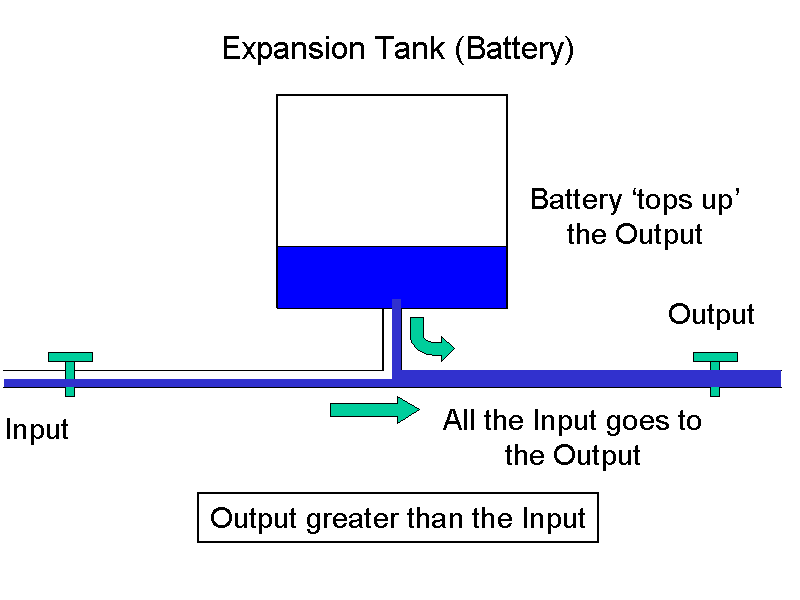
Now the case where the output exceeds the input.
Not only is all the input going to the output, but some of the stored water in the tank is needed to 'top up' the output. This means the tank starts to empty (the battery discharges)
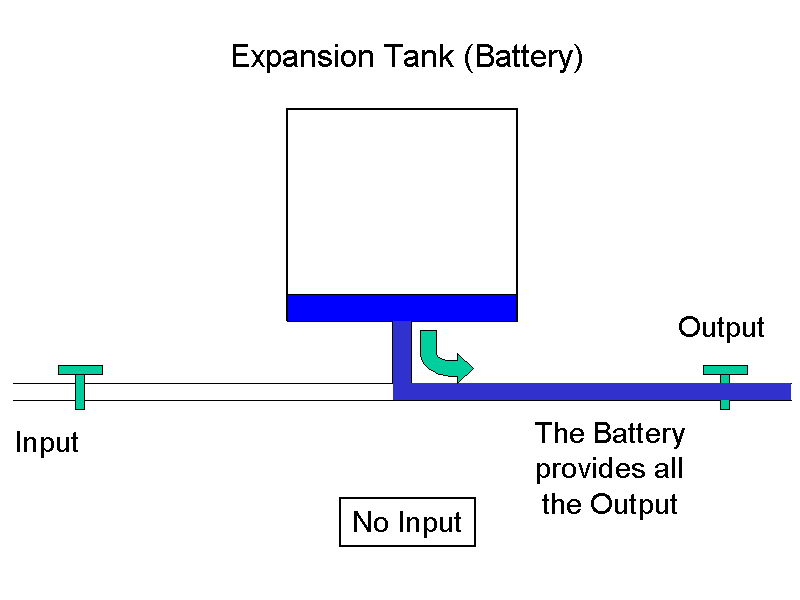
Finally, if there is no input, all the output has to come from the tank (battery) which continues to supply water (power) until it's empty.
At no point is it possible for water (power) to be flowing "into and out of the tank (battery) at the same time" :-)
This note last modified: 26th Sep 2016 12:20.